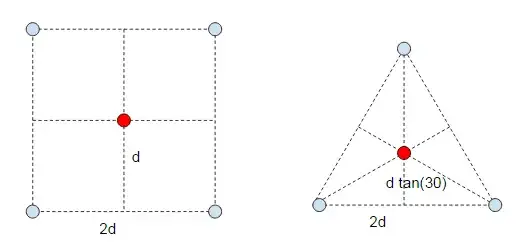Four-legged chairs are by far the most common form of chair. However, only three legs are necessary to maintain stability whilst sitting on the chair. If the chair were to tilt, then with both a four-legged and three-legged chair, there is only one direction in which the chair can tilt whilst retaining two legs on the ground. So why not go for the simpler, cheaper, three-legged chair? Or how about a more robust, five-legged chair? What is so special about the four-legged case?
One suggestion is that the load supported by each leg is lower in a four-legged chair, so the legs themselves can be weaker and cheaper. But then why not 5 or 6 legs? Another suggestion is that the force to cause a tilt is more likely to be directed forwards or sideways with respect to the person's body, which would retain two legs on the floor with a four-legged chair, but not a three-legged chair. A third suggestion is that four-legged chairs just look the best aesthetically, due to the symmetry. Finally, perhaps it is just simpler to manufacture a four-legged chair, again due to this symmetry.
Or is it just a custom that started years ago and never changed?
